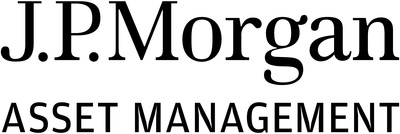J.P. Morgan Releases 2022 Long-Term Capital Market Assumptions, Urging Investors to Look Beyond Public Markets to Generate Returns
J.P. Morgan Asset Management has released its 2022 Long-Term Capital Market Assumptions, projecting a 10-15 year outlook on risks and returns. The report estimates a 4.3% return for a 60/40 portfolio, indicating a shift towards non-traditional assets for higher yields. Key findings include a forecast of 2.2% real GDP growth, 2.4% inflation, and significant adjustments in equity returns, with a notable decline for UK stocks to 4.1%. The emphasis is on exploring real assets and alternative investments to mitigate low public market returns.
- Projected long-term inflation raised to 2.4%, indicating improved economic conditions.
- Expected returns for private equity increased to 8.1%, suggesting strong alternative investment opportunities.
- Focus on real assets as resilient, attractive investment options amidst lower public market returns.
- Projected 60/40 portfolio return remains low at 4.3%, posing challenges for traditional investors.
- UK stock return forecast significantly lowered to 4.1%, indicating sector headwinds.
- Overall muted return expectations for public markets may deter traditional investment strategies.
Insights
Analyzing...
NEW YORK, Nov. 8, 2021 /PRNewswire/ -- J.P. Morgan Asset Management today released its 2022 Long-Term Capital Market Assumptions (LTCMAs), providing a 10-15-year outlook for risks and returns as the economic scars of the pandemic quickly fade, but policy impacts persist.
In the 26th edition of the research, expected returns remain low by historical standards, with a 60/40 portfolio projected to return just 4.3 percent, suggesting that investors need to look beyond traditional asset markets to find higher returns. Additionally, this year's research argues that while real bond yields will continue to lag, mispriced liquidity risk could make real assets serial winners.
This year's research also features several thematic articles tackling issues top of mind for investors:
- Doing good and doing well: ESG trade-offs in investing
- Chinese assets: The biggest risk for investors would be to ignore them
- Cryptocurrencies: Bubble, boom or blockchain revolution?
- Alternative investments: The essential buyer's guide
- Weighing the impact of tax loss harvesting on long-term savings goals
"We are increasingly convinced that the pandemic will leave behind few economic scars, however we expect the policy interventions at the height of the crisis will have a long-lasting impact on markets," said John Bilton, Head of Global Multi-Asset Strategy, J.P. Morgan Asset Management. "Our overall message is optimistic, and those investors who are willing to expand opportunity sets and embrace sources of risk premia beyond traditional assets can still find ample sources of alpha to generate robust and efficient portfolio returns, even as public market return expectations remain muted."
"For the first time in many years we have raised our long-term inflation projections across economies, driven by a somewhat different dynamic to that seen after the global financial crisis, as economies have quickly closed output gaps and fiscal and monetary policy work in partnership," said Dr. David Kelly, Chief Global Strategist, J.P. Morgan Asset Management. "We expect modest real GDP growth by historical standards, with the heavyweight economies of U.S., China and India dragging on the outlook. While we anticipate productivity to grow, spurred on by the pandemic shock encouraging business adoption of technologies, the reality of weak demographics will continue to weigh on economic growth across both developed and emerging economies."
KEY FINDINGS
Global Growth: We thus expect
Global Inflation: For the first time in many years, we have raised our long-term inflation projections to
Policy: The effect of pandemic policy choices will linger, and we must acknowledge that the very same bold fiscal and monetary policy that propelled us out of the pandemic gloom represents a seismic and lasting evolution of economic policy. Gone is a decade of sluggish capex, periodic austerity and weak productivity, offset by loose monetary policy. In its place, we find an emphasis on nominal growth and a greater willingness to tolerate larger balance sheets and higher national debt than we've seen since 1945. Emboldened by their pandemic policy success, governments are now focused on medium-term ambitions. Multi-year spending plans have already been laid out with an emphasis on rebuilding crumbling infrastructure, addressing social inequality and tackling climate change.
ASSET CLASS ASSUMPTIONS
Equities: We forecast an unchanged
Fixed Income: While the outlook for government bonds remains dire, our forecasts for nominal bond returns improve from 2021. Higher starting yields and simply moving forward one year – such that our calculations drop one year of zero or negative policy rates and include a year of at least modestly higher rates at the end of the forecast horizon – improve bond returns. Together, these factors push our 10-year U.S. Treasury returns forecast 80bps higher to
Alternatives: Financial alternatives offer a marked uplift compared with public markets, with cap-weighted private equity up 30bps from last year, at
The LTCMAs are developed as part of a deep, proprietary research process that draws on quantitative and qualitative inputs as well as insights from a team of more than 30 experts across J.P. Morgan Asset Management. In its 26th year, these time-tested projections help build stronger portfolios, guide strategic asset allocations, and establish reasonable expectations for risk and returns over a 10 to 15-year timeframe for more than 200 major asset and strategy classes. These assumptions fuel decision-making in J.P. Morgan's multi-asset investing engine and inform client conversations throughout the year.
Please view the full 2022 Long-Term Capital Market Assumptions and thematic articles here.
About J.P. Morgan Asset Management
J.P. Morgan Asset Management, with assets under management of USD 2.7 trillion (as of 30 September 2021), is a global leader in investment management. J.P. Morgan Asset Management's clients include institutions, retail investors and high net worth individuals in every major market throughout the world. J.P. Morgan Asset Management offers global investment management in equities, fixed income, real estate, hedge funds, private equity and liquidity. For more information: www.jpmorganassetmanagement.com.
![]() View original content to download multimedia:https://www.prnewswire.com/news-releases/jp-morgan-releases-2022-long-term-capital-market-assumptions-urging-investors-to-look-beyond-public-markets-to-generate-returns-301418665.html
View original content to download multimedia:https://www.prnewswire.com/news-releases/jp-morgan-releases-2022-long-term-capital-market-assumptions-urging-investors-to-look-beyond-public-markets-to-generate-returns-301418665.html
SOURCE J.P. Morgan Asset Management







